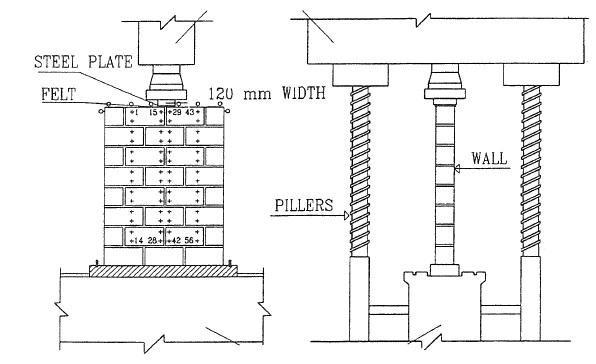M.I. SOLIMAN, A.H. HOSNY, S.M. KHALED AND M.M. KHATTAB
ABSTRACT
A total of 12 panels were tested to investigate the behaviour of concrete block masonry under concentrated loads in terms of the crack pattern, the mode of failure and the ultimate load. The panels were equally divided into three groups, each consists of four panels with different top conditions prepared to study the possible beneficial effects of grouting one or two of the top courses or of using a reinforced top bond beam. The main difference between the groups was the height to width ratio (h/w). Depending on their dimensions, the panels exhibited different crack patterns and modes of failure. The cracks observed in the panels with high ratios ofhlw were almost vertical splitting cracks initiated underneath the applied load. On the other hand, the cracks formed in the panels with low ratios of h/w tended to propagate diagonally through the blocks or following the mortar joints. Grouting the top courses or having a reinforced bond beam underneath the applied load was proven to play significant roll in increasing the ultimate load and reducing the deformation.
F-15



